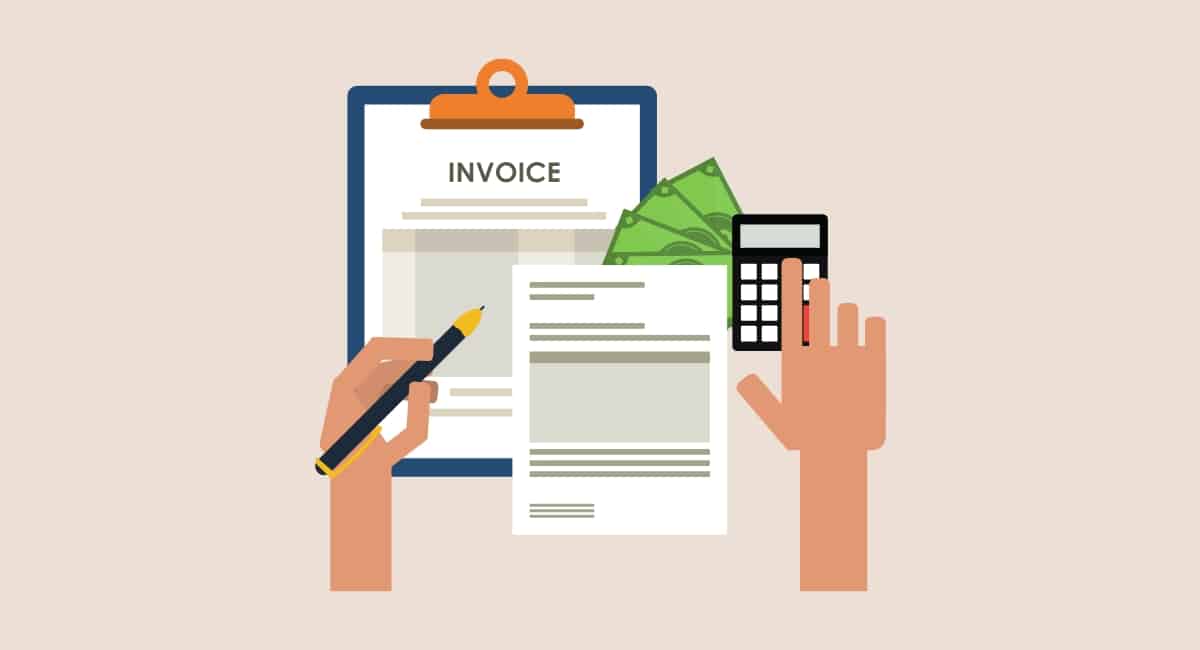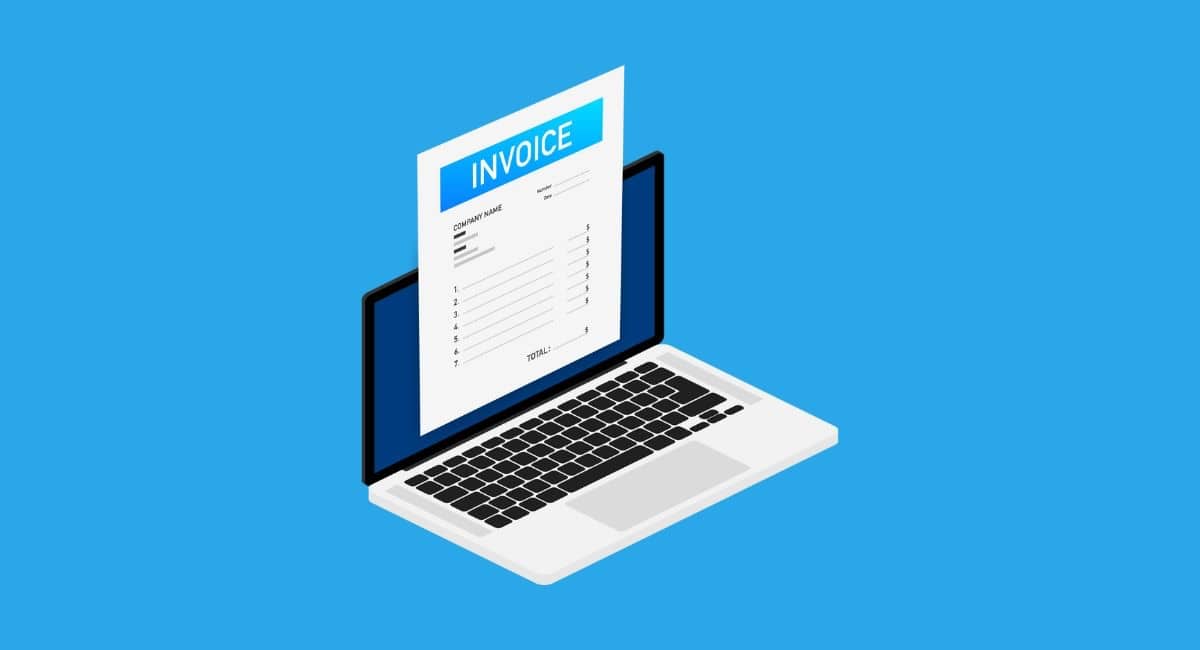A healthy cash flow is a considerable part of any successful business, allowing you to cover expenses and deal with unexpected costs without any added stress.
However, cash flow issues are a common struggle for many small businesses, thanks to late or otherwise unpaid invoices. Naturally, this can quickly lead to damaged relationships and other severe consequences for your business.
Fortunately, there are a few easy practices you can follow to stay on track and improve your overall invoice payment terms wording – additional payment methods, adjustments to due dates, and clear consequences for late payments, for instance.
1. Choosing the right payment deadlines
Ultimately, the aim here is to minimise the time spent waiting for clients to pay your invoices, so let’s look at some of the due dates used by businesses to get paid faster.
Payment on invoice
This means that your client has to pay as soon as they get the invoice. You might have also heard this referred to as “due upon receipt” or “immediate payment”.
7 days’ payment terms
‘Net 7’ (accounting term for 7 days) can be used to allow clients up to a week to make any payments. Similarly, you can use 10-day or 15-day payment terms if this better suits your cash flow needs.
30 days’ payment terms
As the name implies, 30-day payment terms mean that your client has 30 days from the date of the invoice to pay you. This used to be the most common deadline, but the majority of businesses now require payment within 2 weeks.
If no payment due date is specified, the client must pay the seller within 30 days of receiving the invoice, according to UK law. So to demand payment sooner, you must specify a shorter deadline clearly.
45 days’ payment terms
Despite allocating your buyer more time to pay your invoice, the intention here is to demonstrate a generous payment window with the aim of improving customer relationships. However, this is a slightly long-term and good faith approach that will not improve cash flow like 7- or 10-day payment terms.
With the shorter payment deadlines, you’re able to set much more explicit expectations for your client’s invoice, meaning you can cut out the guesswork and get the invoice paid faster.
2. Assess the cost of extended payment deadlines
While it’s understandably tempting to extend payment deadlines to attract more customers, it’s vital to monitor how it may impact your cash flow.
For instance, if you’re trialling longer payment terms, assess your business’ ability to meet basic financial obligations in comparison to your previous terms. How comfortably can your business cover operational costs or pay suppliers now?
Extended payment terms might delay how fast you’re paid initially, but the impact that flexible pricing terms can have for retaining long-term relationships with clients is vastly beneficial.
Ultimately, it’s all about striking a balance between customer satisfaction and a healthy cash flow.
3. Communicate your payment terms clearly and politely
It’s always best to adopt a more diplomatic approach when it comes to invoicing and payment terms. This helps to establish a better rapport with your clients and prevent any avoidable disputes or conflicts.
Just make sure you’re using simple and direct language whenever you’re highlighting your specific terms, avoiding any hostile or aggressively-phrased language.
4. Outline the consequences for late payments
Whenever you’re communicating to a client about payment terms, penalties for late payments should undoubtedly be a topic of discussion.
These serve as an effective deterrent for anyone exceeding the due dates you’ve established, incentivising timely payments in its place. When your clients know there will be a financial consequence for late payments, they’re far more likely to pay your invoice on time to avoid further fees.
Not only do penalties act as a deterrent, but they’re also just a reasonable approach for compensating for all the additional costs or administrative burden caused by late payments.
For instance, you could state something like: “If the payment isn’t received by [due date], a late fee of 5% will be applied.”
5. Balance client relationships and cash flow
Of course, it’s crucial to maintain positive relationships with all your clients, but it shouldn’t come at the expense of the cash flow.
Effective communication is critical here, so try to clearly address any concerns or questions your clients may have without ultimately compromising your position or financial health. This way, you’re taking a much more proactive approach that encourages transparency every step of the way.
6. Consider offering alternative payment methods
Not every customer wants to pay with the same method (usually bank transfers or card payments), so alternative payment methods can definitely facilitate faster payments to improve your overall cash flow.
Online payments are typically a lot more convenient for some clients, so it’s ideal if you’re able to simplify the process down to something as basic as a link or an email containing an easy checkout process.
Generally speaking, this makes the likelihood of getting paid on time far higher as it’s a less convoluted process for the client.
Thought about online invoicing?
Compare easy, affordable invoice apps
7. Automate your invoicing process
Try to use online tools or software designed explicitly for invoicing. Ultimately, this will let you manage the whole process far more efficiently and result in faster payments.
Look for a reputable platform that best aligns with all your business needs, offering you features like:
- Customisable invoice templates with the ability to add your own terms
- Automated reminders for late payments
- Multiple payment options (including invoice settlement via online card payment)
- Automatic calculations
- Integration with payment gateways
When you’re using an invoicing app, you can create personalised invoices with just a couple of clicks, automatically filling in all the relevant information based on the receipt for the goods or services provided.
8. Monitor and adapt
With changes over time to market conditions or industry standards, it’s important to monitor your invoice payment terms to determine their overall effectiveness. Regularly reviewing your payment terms always helps maintain a healthy cash flow.
Aim to review your terms annually or whenever there are significant shifts in your business environment.
If you notice any recurring issues or find room for improvement, never hesitate to make the necessary adjustments. Adapting your business terms of payment is standard practice and ultimately just a reflection of your pragmatism.
With new terms of payment on invoice and billing practices, you’re able to keep on top of your business’ ever-evolving needs and keep a steady cash flow.





